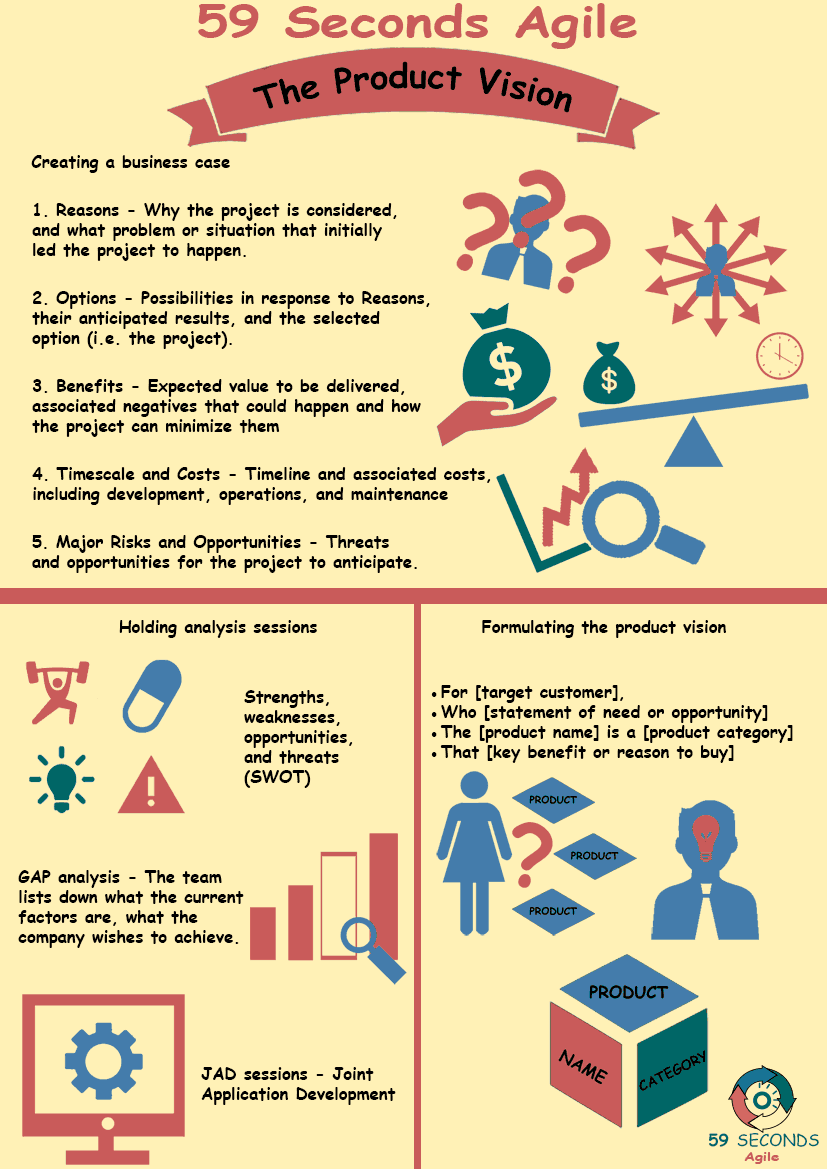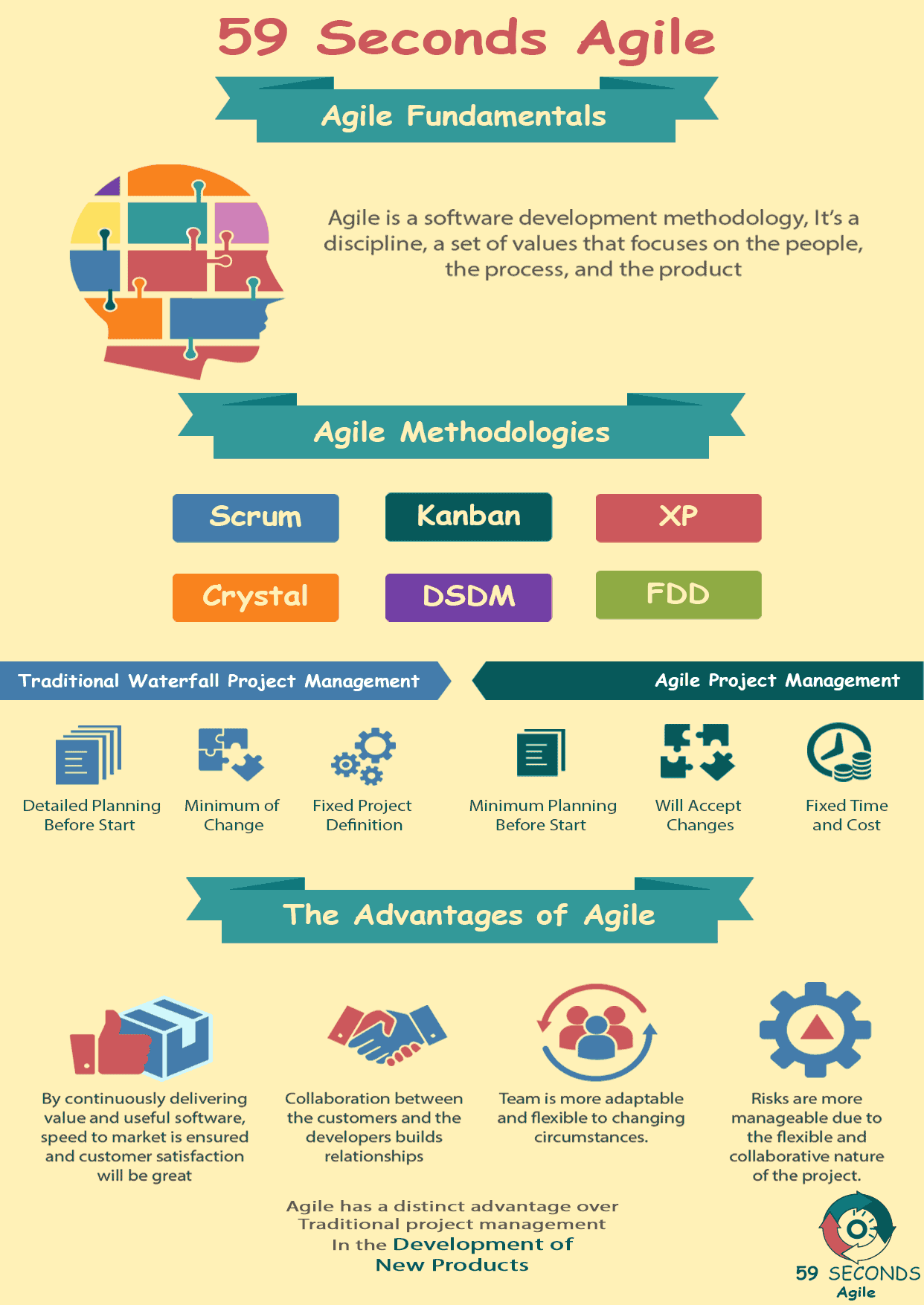This article looks to discuss the Agile Project Vision and the product specification analysis techniques such as GAP Analysis, SWOT Analysis and Joint Application Design (JAD).
The Agile Fundamentals
A 59 Seconds Agile Video Animation
Agile Project Vision and SWOT Analysis – Part 2
A 59 Seconds Agile Article
Meetings and Documents
While the product vision and project business case are useful, they do not create themselves. There are certain meetings and documents used to create and maintain these tools. Developers are involved in some, but not all, but each of them has a particular purpose for the product vision and project business case.
The product vision meeting gets everyone on board. As soon as a project begins, everyone on the team gathers to create and discuss the product vision. This gives every team member a chance to be heard. If developers have questions or concerns about the product vision, they can ask the product owner directly. Open communication builds trust and encourages the entire team to work toward the common goal that they establish in the product vision.
Agile Project Vision: Joint Application Design
Early in the process, a JAD or Joint Application Design meeting addresses technical concerns. The Scrum team is able to speak with stakeholders and get business requirements. In addition to business requirements, the Scrum team can work together to create new information systems. Since developers are the more technical role of the Scrum team, they are most likely the ones who will understand what stakeholders need. Plus, the business requirements will ultimately become tasks to go in the product backlog. Developers can see these requirements early, and anticipate future work for the project.
Agile Project Vision: SWOT Analysis
SWOT analysis is an acronym for Strengths, Weaknesses, Opportunities, and Threats. This is a high-level approach to look at the key parts of a project before encountering problems. Anticipating problems early allows the team to deal with them more effectively. Developers are important in this process as they will have a better understanding of SWOT for the software and development environment. What other roles may gloss over, a developer will have a deeper grasp on.

Agile Project Vision: GAP Analysis
Gap analysis looks at the difference between the current product, and the product vision. It attempts to address how the Scrum team can get from where they are, to where they want to be. Developers are vital to this, as they can usually relate remaining functionality to how much work it will require. Projects with numerous features unfinished may seem far out, but developers may understand that a large portion of code may be reusable. On the other hand, projects with only a few features to go may take longer than expected, because these few features are particularly large or complex. Developers can give a more granular and technical opinion on the gap between the product in development, and the completed product vision.
Ultimately, the product vision gives a point for the Scrum team to focus on. Every bit of work they finish can be based on this end goal. It may seem like unnecessary extra work, but it benefits every role on the Scrum team. Developers, in particular, rely on the product vision to show them that every task they complete gets the software closer to the product vision.
Prev <— Continue Reading —> Next
User Stories Applied
A 59 Seconds Agile Book Review
User Stories Applied by Mike Cohn is one of our favourite books on Agile User Stories. The book starts with an overview into user stories, and details what a user story is and the different aspects of them. He then discusses how to go about writing a user story, and provides details of the INVEST criteria that can be used to determine if the story is meeting all of its objectives. Next Mike gives an in depth discussion of who user stories are written for and where to begin when gathering the details for them. The book then discusses acceptance testing user stories, including how to go about specifying these criteria and the responsibilities of the development team and customers during this process.
Prev <— Continue Reading —> Next
Learn More
Agile Project Management Training Courses
Agile Fundamentals
A 59 Seconds Agile Infographic

Prev <— Continue Reading —> Next
Our Favourite Agile Books
We found these books great for finding out more information on Agile Scrum:

